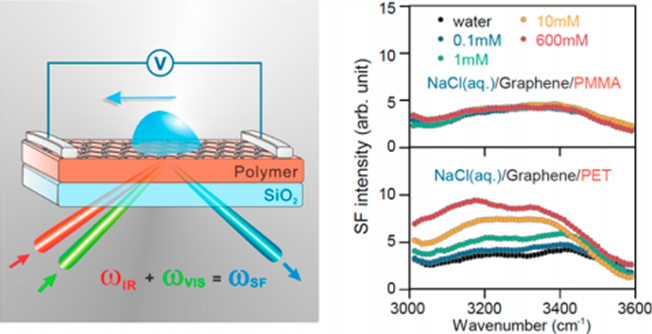Mechanism of Electric Power Generation from Ionic Droplet Motion on Polymer Supported Graphene
| Reviews and Highlights | Quantum Science | Molecular and Soft-matter | Ultrafast Nano-optics and Nanophotonics | Mineralogy and Geochemistry |
|---|
Shanshan Yang, Yudan Su, Ying Xu, Qiong Wu, Yuanbo Zhang, Markus B. Raschke, Mengxin Ren, Yan Chen, Jianlu Wang, Wanlin Guo, Y. Ron Shen, and Chuanshan Tian
J. Am. Chem. Soc. 140, 13746 (2018).
DOI PDF

Graphene-based electric power generation that converts mechanical energy of flow of ionic droplets over the device surface into electricity has emerged as a promising candidate for blue-energy network. Yet the lack of a microscopic understanding of the underlying mechanism has prevented ability to optimize and control the performance of such devices. This requires information on interfacial structure and charging behavior at the molecular level. Here, we use sum-frequency vibrational spectroscopy to study the roles of solvated ions, graphene, surface moiety on substrate and water molecules at the aqueous solution/graphene/polymer interface. We discover that the surface dipole layer of the neutral polymer is responsible for ion attraction toward and adsorption at the graphene surface that leads to electricity generation in graphene. Graphene itself does not attract ions and only acts as a conducting sheet for the induced carrier transport. Replacing the polymer by an organic ferroelectric substrate could allow switching of the electricity generation with long durability. Our microscopic understanding of the electricity generation process paves the way for the rational design of scalable and more efficient droplet-motion-based energy transducer devices.
